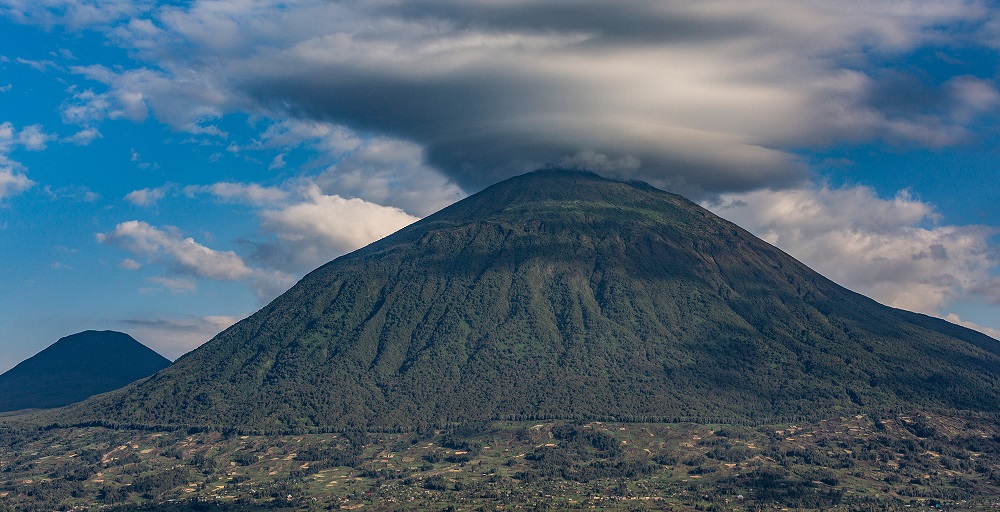Why are Mount Karisimbi So Prominent?
Unveiling the Mystique: Understanding Mount Karisimbi's Prominence
Mount Karisimbi

Mount Karisimbi, towering proudly at 4,507 meters (14,787 feet), reigns supreme as the highest peak in the Virunga Mountains, nestled on the border between Rwanda and the Democratic Republic of Congo. Its imposing presence and majestic beauty have captivated explorers, scientists, and adventurers for centuries. In this comprehensive exploration, we delve into the geological, ecological, and cultural significance that renders Mt Karisimbi so prominent in the heart of Africa.
Unveiling the Geological Marvel of Mount Karisimbi
Formation and Composition
Mount Karisimbi is a stratovolcano, formed by successive layers of volcanic ash, lava flows, and pyroclastic deposits over millions of years. Its formation is intricately linked to the tectonic activity of the East African Rift system, which has shaped the landscape of the region and continues to influence volcanic processes to this day. The mountain’s composition includes a variety of volcanic rocks, such as basalt, andesite, and dacite, reflecting the complex geological history of the Virunga Mountains.
Tectonic Activity
The Virunga Mountains, including Mount Karisimbi, lie within the Albertine Rift, a tectonic rift zone where the African continent is slowly pulling apart. This tectonic activity results in volcanic eruptions, earthquakes, and the formation of new landforms, contributing to the dynamic and ever-changing nature of the landscape. Mt Karisimbi’s prominence is a testament to the ongoing geological processes that have shaped the region over millions of years.
Volcanic Features
As a stratovolcano, Mount Karisimbi exhibits several distinctive volcanic features, including a conical shape, steep slopes, and a crater at the summit. The mountain is also characterized by secondary volcanic cones, lava flows, and volcanic ash deposits, evidence of past eruptions that have sculpted its rugged terrain. These geological features not only contribute to Mt Karisimbi’s prominence but also provide valuable insights into the volcanic history of the Virunga Mountains.
Exploring the Ecological Riches of Mt Karisimbi
Biodiversity Hotspot
Mount Karisimbi and the surrounding Virunga Mountains are renowned for their exceptional biodiversity, supporting a wide range of plant and animal species. From dense montane forests to alpine meadows, the mountain’s diverse ecosystems provide habitat for numerous endemic and endangered species, including the iconic mountain gorillas. Conservation efforts in the region aim to protect this unique biodiversity and ensure the survival of vulnerable species in the face of ongoing threats.
Habitat for Mountain Gorillas
One of the most significant aspects of Mount Karisimbi’s ecological prominence is its role as a habitat for mountain gorillas. These critically endangered primates inhabit the montane forests of the Virunga Mountains, where they feed on vegetation and live in close-knit family groups. Conservation initiatives, such as the establishment of national parks and gorilla monitoring programs, have helped to stabilize and increase mountain gorilla populations in recent years, highlighting the importance of protecting their habitat.
Alpine Flora and Fauna
As climbers ascend Mount Karisimbi’s slopes, they encounter a rich diversity of alpine flora and fauna adapted to the harsh conditions of high altitude. Mosses, lichens, and hardy shrubs cling to rocky outcrops, while endemic species of birds, mammals, and insects thrive in the mountain’s alpine meadows. The presence of these unique organisms underscores the ecological significance of Mt Karisimbi as a hotspot of biodiversity in the Virunga Mountains. Just as we know Why are Mount Baker So Prominent?
Cultural and Historical Significance of Mount Karisimbi
Indigenous Heritage
For centuries, the indigenous communities living in the shadow of Mount Karisimbi have revered the mountain as a sacred place, imbued with spiritual significance. The Twa, Hutu, and Tutsi peoples have passed down stories and traditions that celebrate the mountain’s role in their cultural heritage, from its mythical origins to its practical importance as a source of water, food, and medicinal plants.
European Exploration
In the late 19th and early 20th centuries, European explorers ventured into the Virunga Mountains, drawn by the allure of adventure and discovery. These explorations led to the mapping and scientific study of Mount Karisimbi and its surrounding peaks, shedding light on the geological and ecological wonders of the region. The contributions of these early explorers helped to elevate Mt Karisimbi’s prominence on the world stage and paved the way for future research and conservation efforts.
Conservation Challenges and Future Prospects
Threats to Biodiversity
Despite its ecological and cultural significance, Mount Karisimbi faces numerous threats to its biodiversity, including habitat loss, poaching, and climate change. Deforestation, driven by agricultural expansion and resource extraction, threatens to fragment and degrade the mountain’s ecosystems, while poaching remains a constant threat to endangered species such as the mountain gorillas. Climate change poses additional challenges, altering weather patterns, and exacerbating environmental pressures on the mountain’s fragile ecosystems.
Conservation Efforts
To address these challenges, conservation organizations, government agencies, and local communities are working together to protect Mount Karisimbi and the broader Virunga Mountains landscape. Efforts include the establishment of national parks, the implementation of anti-poaching patrols, and community-based initiatives aimed at sustainable development and environmental education. By engaging stakeholders at all levels, these conservation efforts seek to balance the needs of people and nature while safeguarding Mt Karisimbi’s ecological and cultural heritage for future generations.
Conclusion: The Enduring Prominence of Mount Karisimbi
In conclusion, Mount Karisimbi’s prominence as Africa’s highest stratovolcano extends beyond its towering peak and rugged slopes. Its geological, ecological, and cultural significance reflects the interconnectedness of humanity and the natural world, reminding us of the importance of conservation and sustainable stewardship. As we continue to explore and appreciate the wonders of Mt Karisimbi, let us strive to protect and preserve this iconic landmark for generations to come, ensuring that its majesty endures for all to admire and cherish.
Know More about Mount Karisimbi.
What Are The Tourist Places Nearest to Mount Karisimbi?
When Were Mount Karisimbi Formed?
Where Are Mount Karisimbi Located?
Who Discovered Mount Karisimbi?
How to Reach Mount Karisimbi?




